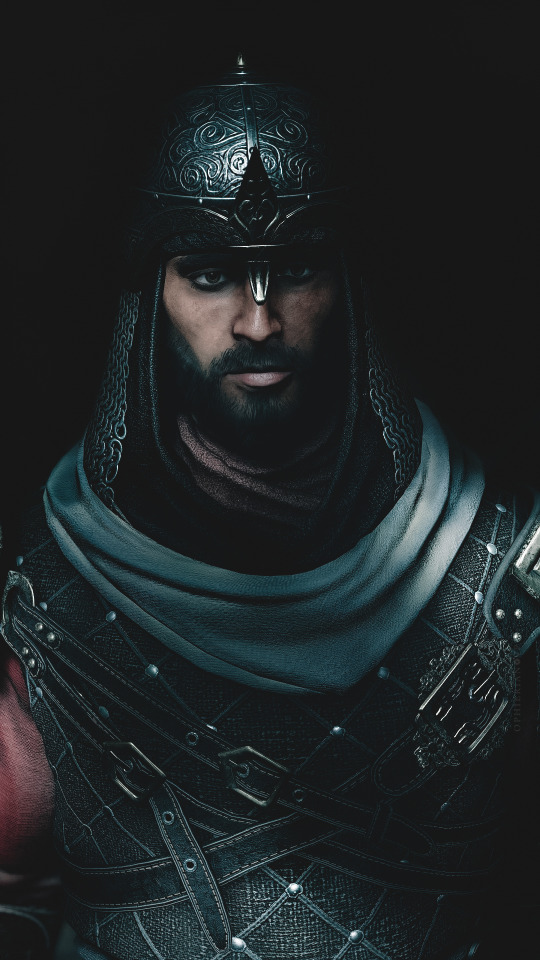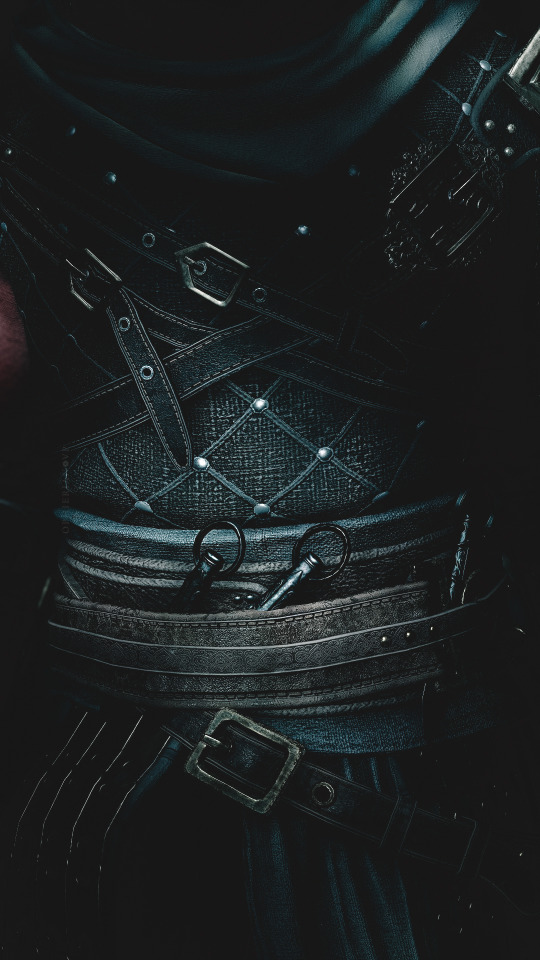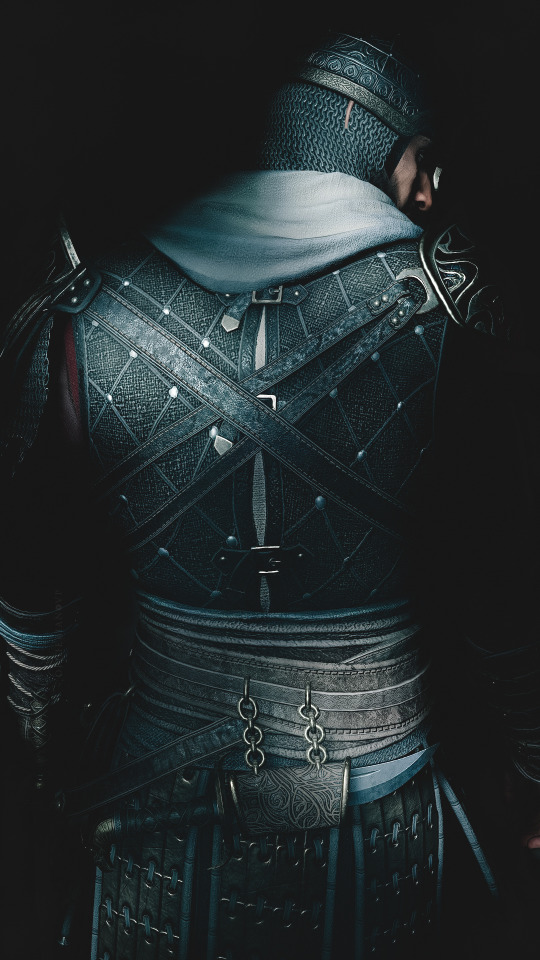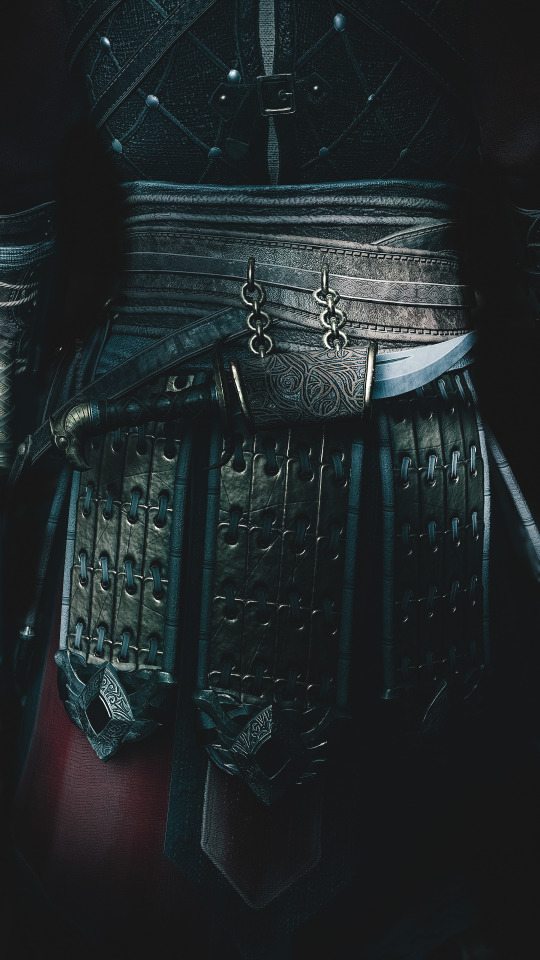#Abbasid
Text
Dark-eyed [...]
like crystal bowls of kohl.
— Ibn al-Muʿtazz, In Deadly Embrace: Arabic Hunting Poems, transl by James E. Montgomery, (2023)
#Arab#Abbasid#Abdullah Ibn al-Mu'tazz#Ibn al-Mu'tazz#In Deadly Embrace: Arabic Hunting Poems#James E. Montgomery#(2023)
265 notes
·
View notes
Text



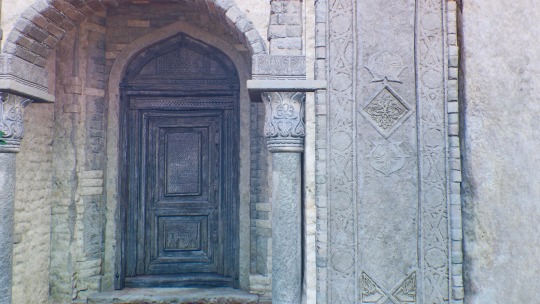
Details and doorways (AC Mirage)
#ac mirage#assassins creed mirage#basim#photomode#ps5#abbasid#architecture#hammam#medieval baghdad#scenery#ubisoft#so many details
134 notes
·
View notes
Text
Medieval Baghdad was a sight to behold. During its Golden Age under the Abbasid Caliphate, it was one of the world’s most stunning and cultured cities.
25 notes
·
View notes
Text

Golden oldie
A little golden elephant hangs out in the corner of the table of contents for the gospel of St Mark in the Lothair Gospels, made between 849 and 851 for Lothair I, Charlemagne's grandson. This manuscript is extraordinary in many ways-- there's lots of expensive purple and gold, a portrait of Lothair himself, the works-- but one of the most interesting features is this tiny elephant, because it is recognizably an elephant. (It can be contrasted with some other attempts at drawing "elephants" from Northern Europe on this blog.) So why did these artists get it right?
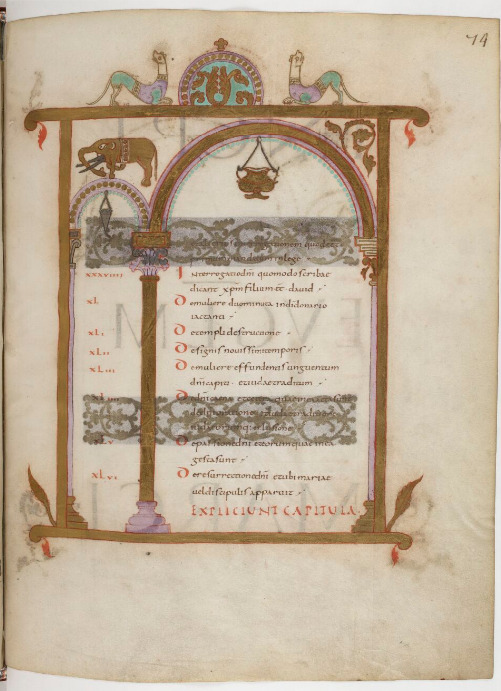
Well, people were still alive in the Frankish realms who had actually seen an elephant! In the early 800s, the Abbaids caliph Harun al-Rashid sent Lothair's grandfather, Charlemagne, an elephant called Abul Abbas. Charlemagne had allied with the Abbasids (based in Baghdad) against the Umayyads (based in the Iberian peninsula), who were the rival power along Charlemagne's southern border and who were the descendants of the dynasty the Abbasids had overthrown in order to claim power. You can read more about this in Sam Ottewill-Soulsby's new book, The Emperor and the Elephant.
Side note: these Carolingian illuminators were into pink and blue 1000 years before Taylor Swift entered her Lover era.
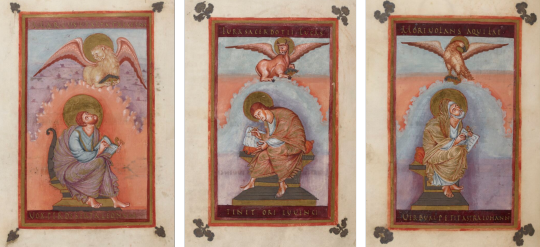
Materials: Parchment, pigments, gold, ink
Origin: Abbey of St Martin, Tours (overseen by Sigilaus for Lothair I)
Date: 849-851
Now Paris, BnF latin 266, f. 74r
#elephant#elephants#medieval elephants#illuminated manuscript#real medieval elephant#war elephant#elephants as gifts#Lothair#abbey of st martin of tours#Charlemagne#abul abas#Carolingian#ninth century#abbasid
30 notes
·
View notes
Text
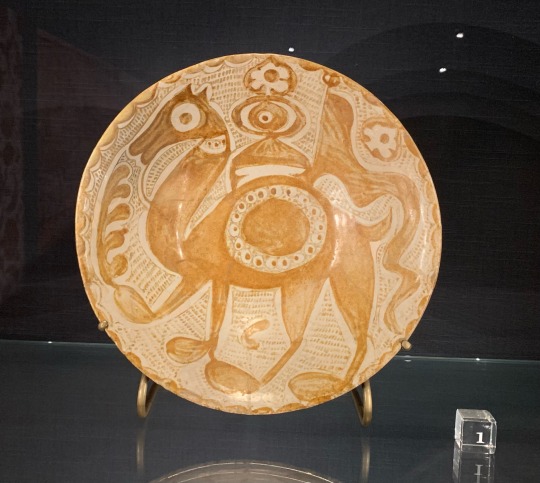
Bowl depicting a camel
Tin-glazed earthenware with luster
Basra, Iraq
900s CE
Detroit Institute of Arts, no. 15.44
146 notes
·
View notes
Text
The Multiethnic Origins of the Muslim Conquest
The Multiethnic Origins of the Muslim Conquest
Episode 19: Islam and the Caliphates
Barbarian Empires of the Steppes (2014)
Dr Kenneth Harl
Film Review
In this lecture, Harl focuses mainly on the battle for control of the Muslim caliphate following the birth of Islam in the 7th century AD.
The key dates he cites are
622 AD – the prophet Muhammad migrates to Medina from Mecca owing to conflict with Mecca elites.
632 AD – Muhammad dies after…
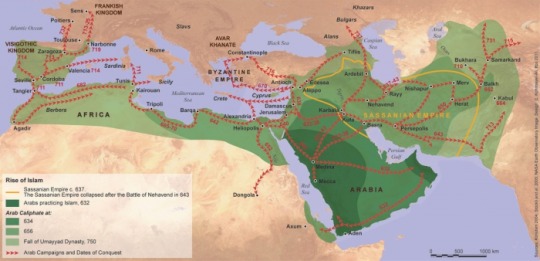
View On WordPress
#abbasid#ali#baghdad#byzantine#caliphate#damascus#egypt#fatima#indus valley#khazars#levant#mecca#media#muhammad#north africa#sassanid empire#shia#transoxiana#turks#umayyad
9 notes
·
View notes
Text

9th Century Baghdad, the capital of the Abbasid Caliphate
Assassin's Creed Mirage Concept Art by Edouard Noisette
#baghdad#assassin's creed#assassin's creed mirage#assassins creed#assassins creed mirage#9th century#early medieval#concept art#abbasid caliphate#abbasid#800s#reconstruction#islamic history#medieval#history#archaeology
1 note
·
View note
Photo

The "world" in the eyes of 9th century Abbasids
151 notes
·
View notes
Text
You’re islamophobic because you’re ignorant
I’m islamophobic because they made significant advances in mathematics and math makes my head go ouch
We are not the same
#196#196 campfire#shitpost#I’m stupid#mathematics#islam#islamic golden age#I’ll never forgive the abbasids#rule#ruleposting
157 notes
·
View notes
Text
... a tender lover
with a deadly embrace.
— Ibn al-Muʿtazz, In Deadly Embrace: Arabic Hunting Poems, transl by James E. Montgomery, (2023)
#Arab#Abbasid#Abdullah Ibn al-Mu'tazz#Ibn al-Mu'tazz#In Deadly Embrace: Arabic Hunting Poems#James E. Montgomery#(2023)#Essence
116 notes
·
View notes
Text



cao'an (thatched hermitage) and its manichaean remnants in jinjiang, fujian, china. though cao'an is on its surface not too different from other buddist temples, it was also manichaean, and may still be manichaean in secret. it's also one of the last standing historical manichaean places of worship in the world. this place has quite the history, so i placed it under a read more:
manichaeism is a former world religion of babylonian origin, reaching as far west as the roman empire and as far east as han china at its greatest extent. it combines elements of several other prominent religions and philosophies - the most notable factor of this is that it reveres founder mani as the final prophet in a line consisting of zoroaster, the gautama buddha, and jesus christ. it went mostly extinct due to persecution of followers throughout its multi-continent laity. manichaean places of worship were either entirely destroyed or appropriated in other parts of the world. it lasted much longer in china (until ming dynasty times) and still exists in some parts of fujian and zhejiang. these believers prefer to remain private about their current practice. what outsiders know about the religion is solely through historical records; because of its comparative longevity in china, many of those records come from there.
manichaeans tended to draw more from the religious/philosophical influences on manichaeism that were most familiar to them. (for example, while manichaeism in jerusalem may have looked more abrahamic, manichaeism in istakhr may have looked more zoroastrian.) in china, manichaeism assimilated to both buddhism and taoism; in the former case, much of it was adapted to be stylistically buddhist, and mani received the title of "buddha of light" and a life story resembling the gautama buddha's.
cao'an was constructed during the song dynasty era (specifically in the 960s), when persecution against manichaeans had been ongoing from emperor wuzong of tang's suppression of all foreign religions. (the same policies had affected zoroastrians, eastern syriac christians, and buddhists, but continued for manichaeans after.) at this time, many manichaean temples had buddhist or taoist affiliations, or disguised themselves as buddhist or taoist only. it became officially buddhist after manichaeism was banned in 1368. since abandoned, it was revived for explicit buddhist usage for a short period in the early 20th century. it's preserved as a cultural monument today.
cao'an has managed to preserve remnants of its manichaean affiliations. one is that, instead of a nianfo phrase usually seen in chinese buddhist temples, an inscription on a nearby stone dating to the 15th century reminded worshippers of "purity, light, power, and wisdom". this mantra is an adaption of manichaean cosmology in chinese manichaeism. the original stone was destroyed during the cultural revolution but the phrase was re-inscribed on another after. another is a statue that seems to portray the buddha, but is thought to actually portray mani. unlike other portrayals of the buddha, this one has long, straight hair which is worn down, different facial features and hand/head postures, and, at one point, facial hair. (this was filed off in the early 20th century by a buddhist monk to make him look more like the buddha.) it's also consistent with other portrayals of mani in chinese manichaean art.
#china#architecture#details#worship#manichaean#buddhist#shared space#my posts#'Are Manichaeans Ahl al-Kitāb' - the greatest thread in the history of Abbasid forums locked by Harun al-Rashid after 12239 pages of heate
26 notes
·
View notes
Text
In the 8th century AD, the Abbasid caliphate rose up as one of history’s most powerful empires. Its success was short lived, however, as Caliph Harun al-Rashid's well-intentioned plans triggered a power struggle, leading to the fall of the Abbasid Empire.
16 notes
·
View notes
Text
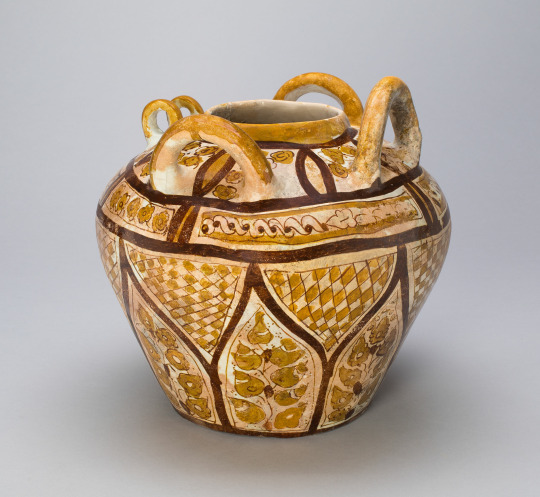
Jar
Iraq, Abbasid Caliphate (750–1258), 9th century
During the Abbasid caliphate (750-1258), relative peace and an initially consolidated government allowed for the arts and sciences to flourish. The caliphate’s first capital, Baghdad, and its later capital, Samarra, became centers for cultural and commercial production. Some of antiquity’s most important scientific treatises, such as Ptolemy’s writings on the stars, were translated into Arabic while court inventors made advancements in medicine, chemistry, and mathematics. In the arts, poets such as Abu Nuwas invigorated classical Arabic literature, and artists developed a style of decoration that the west would later call “arabesque,” which refers to repetitive vegetal patterns that can be found in almost every medium of Islamic art.
16 notes
·
View notes
